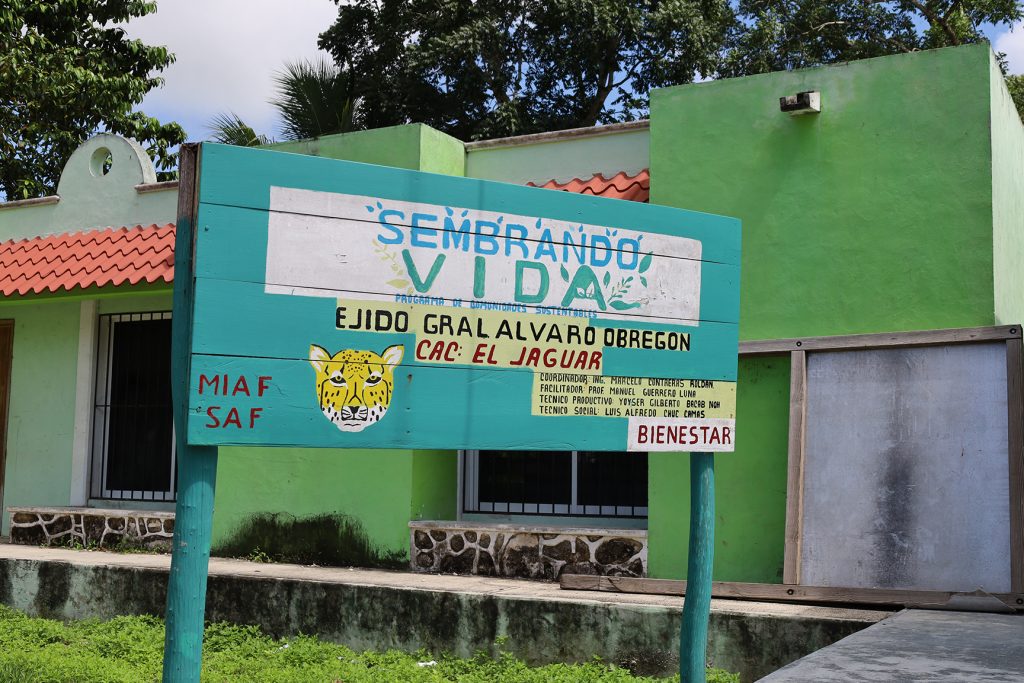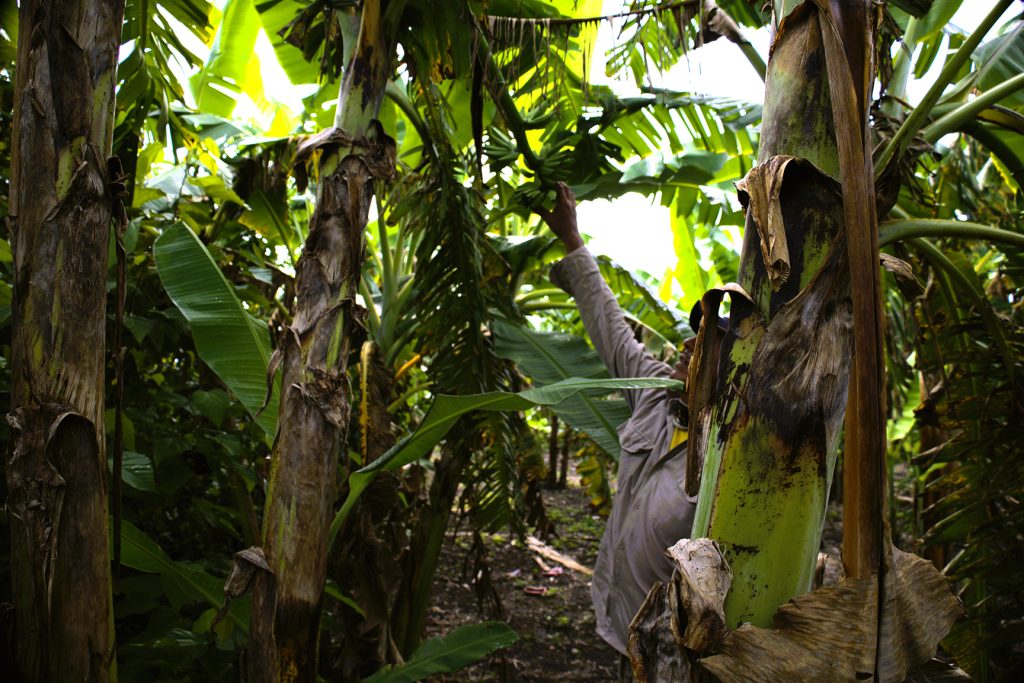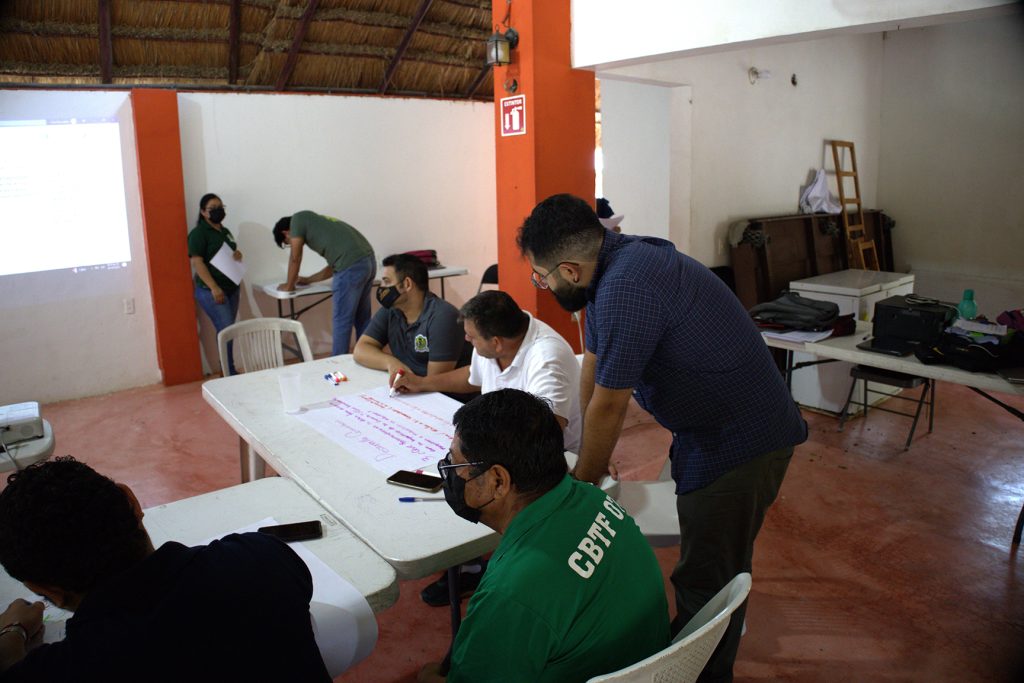Leonardo Calzada 2023 Field Report
Sembrando Vida seeks to establish small-scale agroforestry systems; this program embodies a multi-faceted approach to address critical challenges in rural areas rooted in a vision of rescuing rural communities, generating employment for farmers, and regenerating forests. Four years after its pilot implementation in regions such as Yucatan, the program operates in 22 Mexican states, covering more than 8,000 ejidos – collective land distribution systems that own about 80 % of Mexico’s territory. In its rules of operation, the program contemplates three main actions: First, the payment of economic support on a monthly basis ($250) and the creation of savings accounts with annual returns. Second, is the accompaniment of two technicians (social and productive) whose main functions are implementing agroforestry systems and creating inclusion mechanisms for young people and women. Third, the modification of the land tenure to allow pobladores (inhabitants without property titles) and ejidatarios (ejido members with property titles) to establish two to five hectares agroforestry plots. In regions such as the Yucatan Peninsula, Sembrando Vida is presented as an integrating program between the mechanisms of social economy at the local level and the intervention of regional development projects such as the 6 billion dollars Mayan touristic train. Sembrando Vida has promoted planting nearly 20 million native plants in Yucatan within agroforestry systems that combine milpa [traditional agricultural systems] and different fruit and timber trees.
In July 2022, a forestry engineer from the region showed me a plot where a 70-year-old tropical forest had been cleared to access Sembrando Vida funds. This upward trend in forest degradation is particularly relevant if we consider that, in terms of hectares affected, forest degradation in Yucatan has surpassed deforestation in the last two decades; however, because degradation is less visible than deforestation, this process is more challenging to characterize and monitor. In addition to potential intentional degradation, the program operates in a complex landscape in which its impact depends on several factors, such as the interaction of state and non-state actors, divergent views on forests and a complex web of socioeconomic and biophysical factors. Understanding the implementation of Sembrando Vida and its impacts on forest degradation processes requires an in-depth analysis of its effects on forest management systems, stakeholder coalitions, visions for the future, and changes in practices. My research addresses this phenomenon within the Calakmul-Sian Ka’an Biological Corridor, with the aim of shedding light on the intricate dynamics of forest conservation, rural development, and community empowerment.

Fieldwork Experience
My doctoral dissertation is being carried out in the Calakmul-Sian Ka’an Biological Corridor, Mexico. Specifically in the ejidos of Flores Magon in the state of Campeche, and Petcacab and Laguna Om in the state of Quintana Roo. I have conducted two field visits, one in 2022, in which I focused on obtaining data on the structure and composition of 48 forest plots. The second field visit in the summer of 2023, with the support of CLAG, allowed me to establish contact with a group of researchers from the Faculty of Science and the Institute of Ecology of the National Autonomous University of Mexico interested in this research and in collaborating to promote an analysis focused on understanding the territorial dynamics of the biological corridor. Additionally, I developed a series of pilot interviews with Sembrando Vida participants, youth, women, and local authorities from the ejidos Diaz Ordaz, La lucha, and Alvaro Obregon to understand how the Sembrando Vida program was being implemented and how it related to changes in the landscape and local governance systems around land use and management (Photo 1). As an additional step during the interviews, we visited Sembrando Vida plots of the interviewees, where the beneficiaries showed us what management practices they applied in their plots and what kind of products they obtained (Photo 2). Finally, this field trip also allowed me to establish contact with the Zoh Laguna Forestry High School, where I participated in a discussion forum on the future implementation of a technical minor degree in Community Development (Photo 3).
Although the study area comprises 192 ejidos, the rural communities in which the pilot interviews were implemented along with the ejidos selected to conduct the interviews are a representative sample, either because of their large size, number of beneficiaries, the presence of forestry or subsistence farming activities, or their participation in other relevant public policies such as payment for environmental services, natural protected areas or agricultural subsidies. Sembrando Vida participants have established labor-intensive plots that have helped them to produce enough food for their families, with surpluses to sell within and between communities. The program has also helped conserve and restore secondary and primary forests since most of the degradation was caused by shifting cultivation and logging to meet basic household needs.

Despite these positive results, the program faces some important challenges that could affect its longterm sustainability. First, it is unclear whether the program will continue to be part of the public policy package under future federal governments. Second, it is necessary to develop political platforms that allow beneficiaries to participate in the design and planning of the program. Finally, there is uncertainty about how the current land tenure systems will affect beneficiaries who have been granted usufruct rights to the land they use for their Sembrando Vida plots but who do not hold the land property.
CLAG Funds
CLAG funds were used for airfare from New York to Mexico City, a round-trip domestic flight from Chetumal to Mexico City, and lodging in the community of Zoh Laguna. CLAG’s financial support allowed me to establish initial contacts with the Ejido authorities in order to conduct the interviews and focus groups. Additionally, a series of pilot interviews were carried out in three communities to adjust the instrument currently being used to obtain around 90 interviews.
Achievement of Objectives
One of the main objectives of this research is to explore local perceptions about the implementation of sembrando vida and how the beneficiaries consider that this program relates to changes in forests or how people manage and access land. When asked to talk about the positive aspects of the program, interviewees mentioned that Sembrando Vida was different from previous public policies implemented by the government. Among the most noteworthy aspects, the respondents mentioned that, since the program’s arrival, the transmission of information, knowledge, and experiences among beneficiaries has become common, a situation that before the policy implementation was not common or effective. It is important to highlight that the interviewees reported the creation of surveillance networks to take care of the plots, the tools used, and the harvests after the program began in their communities. Finally, the study participants emphasized that the program has allowed the incorporation of youth and women in forestry and agricultural activities. This contributes to the generational replacement in the management of the territory, which is a central problem for the ejido members, who state that a major issue is that most of the community members dedicated to agriculture are over 60 years old. Thus, most of them face difficulties in carrying out their productive practices.

While participants showed the potential of Sembrando Vida to promote forest conservation while allowing them to maintain their agricultural activities on labor-intensive plots, interviewees often stressed their anxiety about the future of the program and the difficulties it faces. For example, one of the interviewees commented that three processes threaten the program’s future implementation, which could result in unintended consequences such as forest degradation or problems related to the internal organization of ejidos to manage their territory.
The processes are: (1) Lack of program coverage or continuity may mean that many participants or people who depended on daily wages related to land clearing and maintenance will return to activities such as livestock grazing that involve controlled burning. (2) Lack of monitoring or poor selection of participants may encourage people who did not have access to land before the program to clear secondary and primary forest sites to access the policy, a problem that the high labor requirements of agroforestry plots may accelerate. (3) The lack of technical support or the participation of people with little interest in agricultural or forestry activities will lead them to abandon or sell the plot, resulting in the fragmentation of the ejido and the proliferation of small-scale private property.
See the full report here.


















